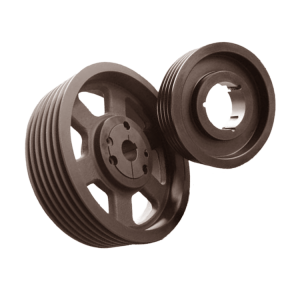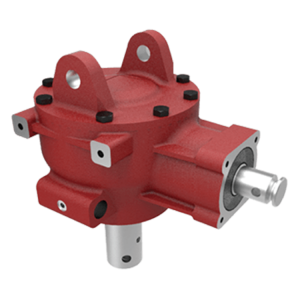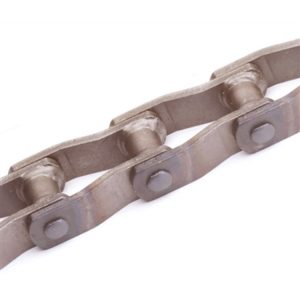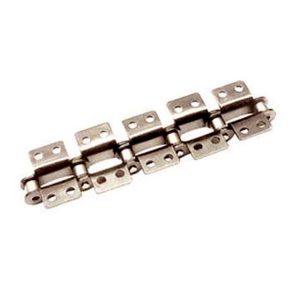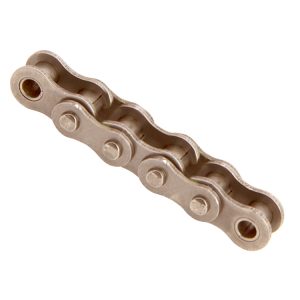Product Description
Product Description
| Production name | window and door roller, cabinet roller, furniture roller | Material | Nylon roller |
| Size | Customized | Color | Customized |
| Package | carton, Customized | Design | make to order |
| MOQ | 10000PCS | Port | ZheJiang , China |
We are supplying more than 400 difference types of window / door roller. Our productions
are mainly exported to America and European market. Within high quality and competitive
price, our rollers are well accepted by our clients.
Meanwhile, we accepted customized orders. Your own design / drawing/ samples is welcome,
and also, print your own logo on the carton (customized package) is available:
First step: Send your own drawing (CAD FORMAT) or real samples to us.
Second step: we will open a new mould according your drawing or samples.
Third step: we testing products the new samples and send to customer for approval .
Forth step: after approval, mass production start.
In pasting 14years, we always explore the new design / types rollers within our customer
within our best service and
help them to win the higher and higher market share.
Detailed Photos
Company Profile
HangZhou CHINAMFG PLASTIC PRODUCTION CO.,LTD was founded in 2007. It is a professional manufacture of
window and door accessories production, including pile weather strip, rubber seal strip, plastic seal strip, roller etc. After
more than 10 years developing, now we have 50pcs extrusion lines and 50pcs woven lines, material are widely exported
to America and European market.
We accepted customized orders, both our productions size, colors, packages can be make to order. Welcome to send us
your own drawing or samples.
/* January 22, 2571 19:08:37 */!function(){function s(e,r){var a,o={};try{e&&e.split(“,”).forEach(function(e,t){e&&(a=e.match(/(.*?):(.*)$/))&&1
| After-sales Service: | Others |
|---|---|
| Warranty: | Lifetime |
| Splittable: | Splittable |
| Customization: |
Available
| Customized Request |
|---|
.shipping-cost-tm .tm-status-off{background: none;padding:0;color: #1470cc}
|
Shipping Cost:
Estimated freight per unit. |
about shipping cost and estimated delivery time. |
|---|
| Payment Method: |
|
|---|---|
|
Initial Payment Full Payment |
| Currency: | US$ |
|---|
| Return&refunds: | You can apply for a refund up to 30 days after receipt of the products. |
|---|
What is the difference between a fixed and a swivel pulley?
Fixed and swivel pulleys are two common types of pulleys that differ in their design and functionality. Here are the key differences between these two types:
1. Fixed Pulley: A fixed pulley is a type of pulley that is mounted or attached to a fixed point, such as a beam or a ceiling. It does not move or rotate independently of its mounting point. The primary function of a fixed pulley is to change the direction of the force applied to a rope or cable. When a force is applied to the rope or cable passing through a fixed pulley, the load moves in the opposite direction. However, a fixed pulley does not provide any mechanical advantage, meaning it does not reduce the effort required to lift the load.
2. Swivel Pulley: A swivel pulley, also known as a movable pulley, is designed to rotate or swivel on a separate mounting point. It has a built-in mechanism that allows it to move independently. Unlike a fixed pulley, a swivel pulley is capable of changing both the direction and the magnitude of the force applied to the rope or cable. When a force is applied to the rope or cable passing through a swivel pulley, the load moves in the same direction as the applied force. Additionally, a swivel pulley provides a mechanical advantage by distributing the load’s weight over multiple strands of rope or cable, reducing the effort required to lift the load.
In summary, the main differences between fixed and swivel pulleys are:
– Fixed pulleys are stationary and do not move independently, while swivel pulleys can rotate or swivel on a separate mounting point.
– Fixed pulleys change the direction of the force applied to the rope or cable, while swivel pulleys change both the direction and the magnitude of the force.
– Fixed pulleys do not provide a mechanical advantage, while swivel pulleys provide a mechanical advantage by distributing the load’s weight over multiple strands of rope or cable.
Both fixed and swivel pulleys have their specific applications and can be used individually or in combination with each other to achieve desired mechanical functions in various systems and setups.
How do pulleys work in garage door openers and winches?
Pulleys play a crucial role in both garage door openers and winches, enabling the smooth and efficient operation of these devices. They provide mechanical advantage, facilitate load lifting and lowering, and contribute to the overall functionality and safety of garage door openers and winches. Here’s how pulleys work in each of these applications:
1. Garage Door Openers:
In a typical garage door opener system, pulleys are used in conjunction with a motor, drive belt or chain, and a set of cables or torsion springs. The pulleys are mounted on the garage door’s torsion bar or header, and the cables or springs are connected to the bottom of the door. Here’s how the pulleys work in a garage door opener:
– Motor and Drive Mechanism: The motor drives a pulley or sprocket, which is connected to a drive belt or chain. As the motor rotates the pulley, the drive belt or chain moves, transferring rotational motion to another pulley or sprocket mounted on the torsion bar.
– Torsion Bar and Cables: The torsion bar, equipped with a pulley, is located above the garage door. The cables are threaded through the pulleys and attached to the bottom of the door on each side. When the motor rotates the torsion bar pulley, the cables move, causing the garage door to open or close.
– Mechanical Advantage: By using pulleys, the garage door opener system creates a mechanical advantage. The arrangement of the pulleys and cables or springs helps distribute the load, making it easier for the motor to lift the heavy garage door. This mechanical advantage reduces the strain on the motor and ensures smooth and controlled movement of the door.
2. Winches:
Pulleys are also integral components of winches used for lifting and pulling heavy loads. Winches consist of a drum or spool around which a cable or rope is wrapped, and pulleys are used to guide and redirect the cable or rope. Here’s how pulleys work in a winch:
– Load Lifting: The cable or rope is wound around the winch drum, and one end is attached to the load to be lifted or pulled. The other end is connected to a fixed point or a secondary pulley system. As the winch drum rotates, the cable or rope is wound or unwound, allowing the load to be lifted or lowered.
– Pulley Systems: Pulleys are used in winches to redirect the cable or rope, providing a mechanical advantage and ensuring smooth movement. Additional pulleys may be employed to create a block and tackle system, further increasing the mechanical advantage and the winch’s lifting capacity.
– Control and Safety: Winches often incorporate braking systems and clutches to control the movement and secure the load. Pulleys play a role in these control mechanisms, helping to regulate the winch’s speed and provide reliable stopping and holding power.
Overall, pulleys are essential components in garage door openers and winches, enabling the smooth and controlled movement of heavy loads. They provide mechanical advantage, facilitate load lifting and lowering, and contribute to the efficiency and safety of these devices.
Can you explain the basic principles of pulley mechanics?
Pulley mechanics are based on a few fundamental principles that govern the operation of pulley systems. Here’s an explanation of the basic principles:
1. Mechanical Advantage: The primary principle of pulley mechanics is mechanical advantage. A pulley system allows for the multiplication of force applied to the rope or belt. By distributing the force over multiple segments of the rope or belt, the load becomes easier to lift or move. The mechanical advantage gained depends on the number of pulleys used in the system. The more pulleys in the system, the greater the mechanical advantage.
2. Force Transmission: When a force is applied to one end of the rope or belt, it creates tension that causes the pulley to rotate. As the pulley turns, the force is transmitted to the load attached to the other end of the rope or belt. This force transmission allows for the movement and manipulation of objects in pulley systems.
3. Directional Change: One of the key principles of pulley mechanics is directional change. A pulley system enables the operator to change the direction of the applied force. By redirecting the force along a different path, a pulley system allows for force to be exerted from a more convenient or advantageous position. This directional change is particularly useful in situations where the force needs to be applied vertically, horizontally, or at an angle.
4. Conservation of Energy: Pulley mechanics also adhere to the principle of conservation of energy. The work done on the load by the applied force is equal to the work done against the load’s weight. Through the pulley system, the input force is transformed into an output force that moves or lifts the load. The energy input and output remain the same, but the pulley system allows for the distribution and transformation of forces to achieve the desired mechanical advantage.
5. Speed and Torque Conversion: Pulleys can also be used to convert speed and torque in mechanical systems. By varying the size of the pulleys or using pulleys of different diameters, the rotational speed and torque can be adjusted according to the requirements of the system. This speed and torque conversion allows for the optimization of power transmission and the matching of different rotational speeds between input and output components.
6. Multiple Pulley Systems: Pulleys can be combined in systems to achieve increased mechanical advantage or to create complex motion patterns. In systems with multiple pulleys, such as block and tackle arrangements, the load is distributed over several segments of rope or belt, further reducing the effort required to lift heavy objects. These systems are often used in cranes, elevators, and other applications where heavy lifting is necessary.
These basic principles of pulley mechanics form the foundation for the understanding and application of pulleys in mechanical systems. By harnessing mechanical advantage, force transmission, directional change, conservation of energy, and speed/torque conversion, pulley systems provide a versatile means of lifting, moving, and manipulating loads in various applications.
editor by CX
2024-05-07











